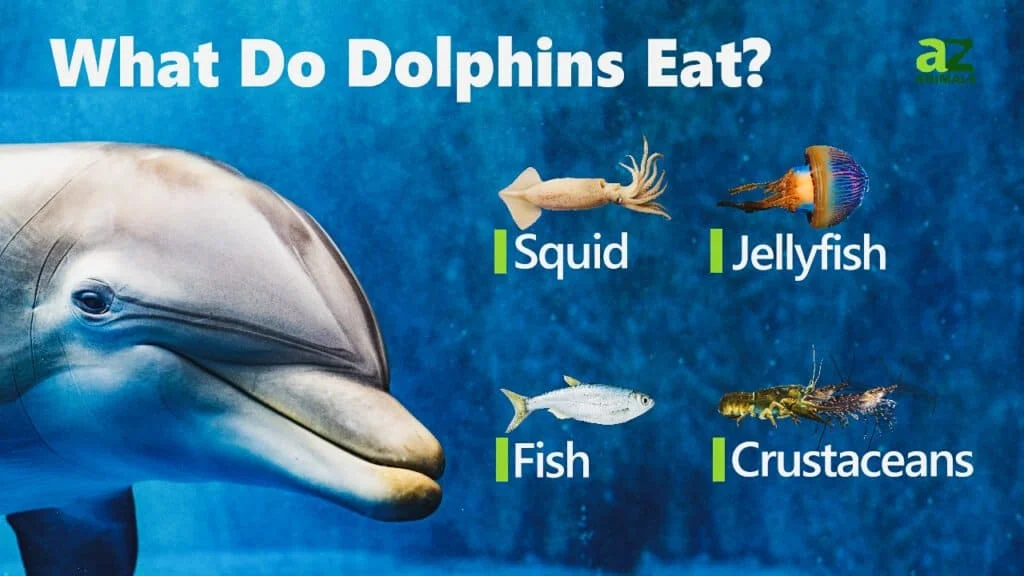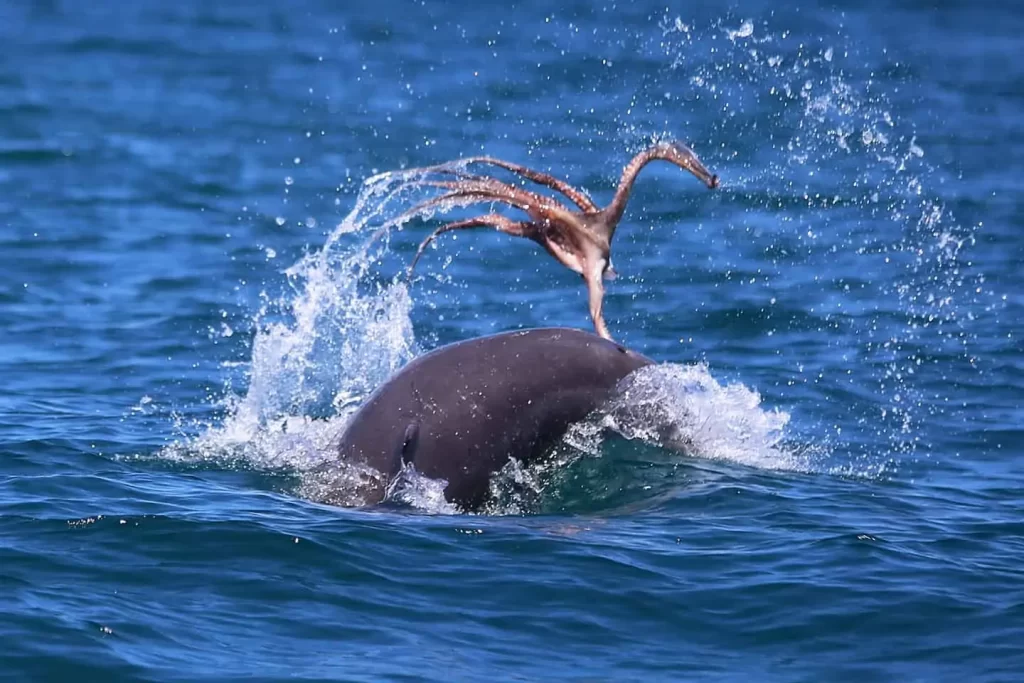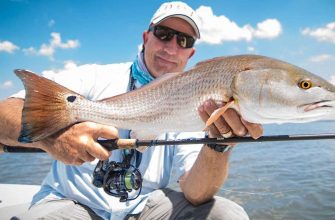
Toothed whales (including all dolphins) are carnivores; they eat other animals. Dolphins eat a variety of fish, squid, shrimps, jellyfish and octopuses. The types of fish and other creatures dolphins eat depend on the species of dolphin, where the dolphins live and the wildlife that shares their habitats.
Dolphins eat mackerel or other small fish

Dolphins are some of the smartest animals on the planet.
Like humans, they are able to communicate with each other through a complex language made up of clicks and whistles.
They can even send each other pictures through sound! Dolphins are highly social, traveling and hunting in large packs known as pods.
Because they have a natural talent for working as a team and enjoy interacting with others, you can often find dolphins performing at zoos and water parks. Their favorite reward for performing a trick is a tasty mackerel or other small fish.
The most famous type of dolphin, and the kind you see most often in captivity, is the bottlenose dolphin.

This species is the most friendly type of dolphin and also perhaps the most intelligent. What do dolphins eat Well in the wild, dolphins are carnivorous and hunt for food in packs.
They are capable of advanced hunting tactics, and many pods develop unique methods to capture fish in their home environment.
If you are curious about what bottlenose and other dolphins eat, this website is here to help.
A List of Foods that Dolphins Eat
Dolphins have a diet that includes:
- Small Fish
- Eels
- Hake
- Cod
- Crabs
- Shrimp
- Squid
- Croaker fish
- Pilchard
- Jellyfish
- Anchovies
- Shrimp
- Carp
- Goby fish.

What do Bottlenose Dolphins Eat?
Bottlenose dolphins are big. Adults can weigh anywhere from 300 to 1400lbs, and any animal that big needs to eat a lot of fish. Bottlenose dolphin pods can have up to 1000 members, although usually they are much smaller.

They like to hunt off the coast and can be found in every ocean on Earth. Their favorite prey are tuna, mackerel, squid and other small marine creatures.
Bottlenose dolphins are excellent predators and use echolocation to keep track of prey in the water.

They do this by emitting a short sonic pulse, which bounces off of fish, the ocean floor and other dolphins to tell them exactly where things are.
Some pods drive shoals of fish toward a shore, where the fish are trapped and easier to catch.
Other pods drive up dirt in the shallows and then use their echolocation to find fish that can’t see in the muddy water.
Some bottlenose dolphins off the coast of the southern United States actually push fish up onto the beach before also stranding themselves. They then wriggle around, collecting fish, before returning to the ocean.

Bottlenose dolphins often get caught in fishers’ nets, which can result in their death.
However, in the last few years laws have been passed to help protect dolphins.
This has resulted in a dramatic improvement in dolphin mortality from fishing nets.
In some areas, dolphins actually assist fishermen by herding fish into the nets and then picking off confused stragglers who escape. Pods have even learned to signal the fishermen to drop their nets at the right time, thus ensuring they get an easy meal in the process.
What do Other Dolphins Eat?
Bottlenose dolphins may be the most famous type of dolphin, but there are certainly other members of the family worth mentioning. For example, did you know that killer whales are actually dolphins? Like their smaller bottlenose cousins, killer whales travel and hunt in close-knit family groups called pods. They eat much larger prey, such as seals, fish and even sharks and whales!

They are very intelligent, like all dolphins, and use sophisticated tactics depending on what they are hunting.
When hunting sharks, for instance, killer whales roll the big fish onto their backs, thus paralyzing them and preventing retaliation.
Other oceanic dolphins whack fish with their tails, which can send fish flying into the air and stuns them upon re-entering the water.
Other dolphins don’t live in the ocean at all, but instead inhabit rivers. The Amazon river dolphin is one such animal. River dolphins have longer snouts than oceanic dolphins, and tend to be smaller. They are agile and use their long beaks to hunt fish that hide behind tree roots, or small crustaceans buried in mud. Because river dolphins live in close proximity to humans, they are all endangered species.

The Yangtze river dolphin was declared extinct in 2004 because of pollution and the over-fishing of its habitat.
It’s important to remember these intelligent and emotionally complex animals as we develop rivers and continue to fish in the oceans.
Their tastes often align with our own, but there’s no reason to believe we can’t coexist with these amazing creatures.
Pink Amazon Dolphin Eating a Fish

